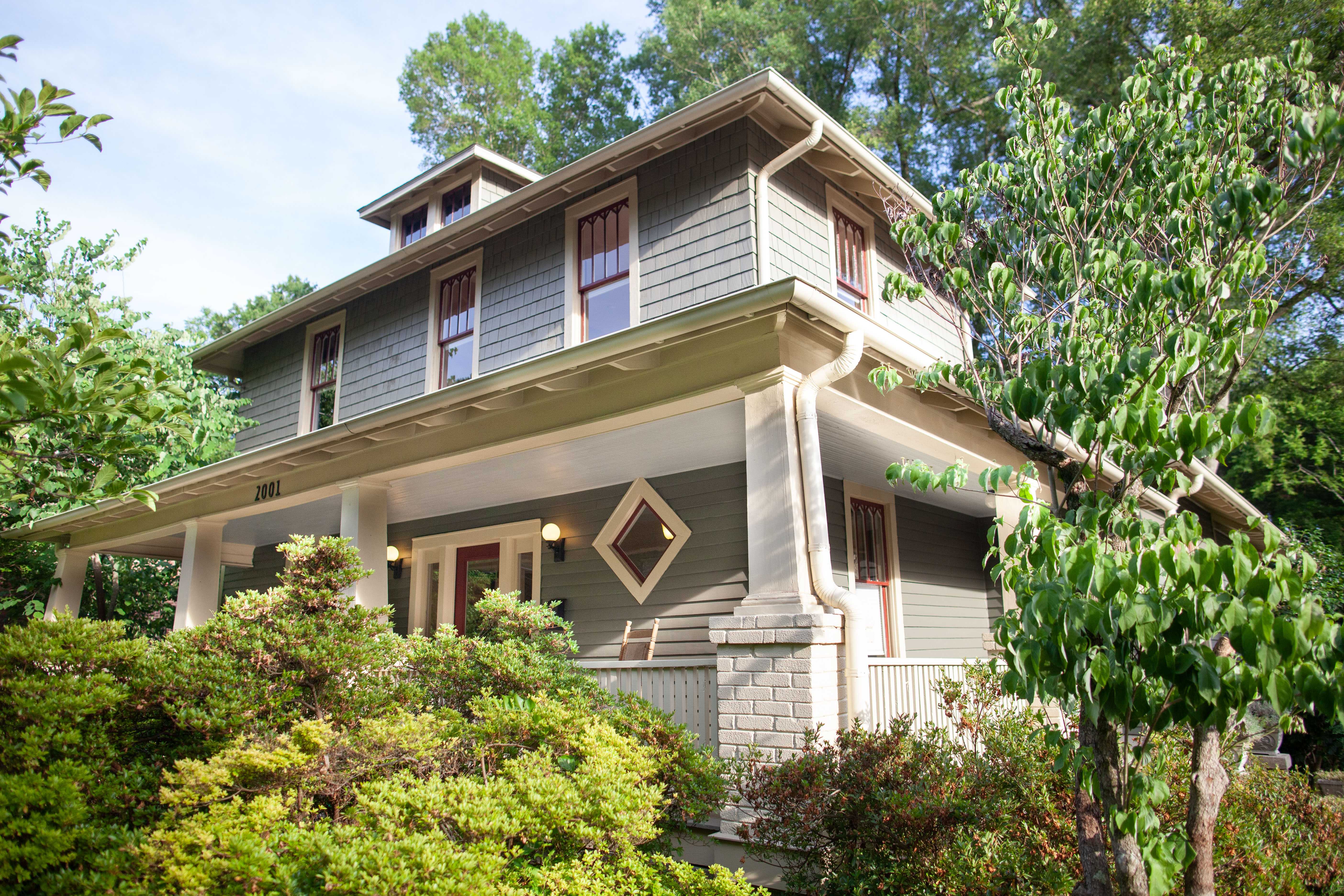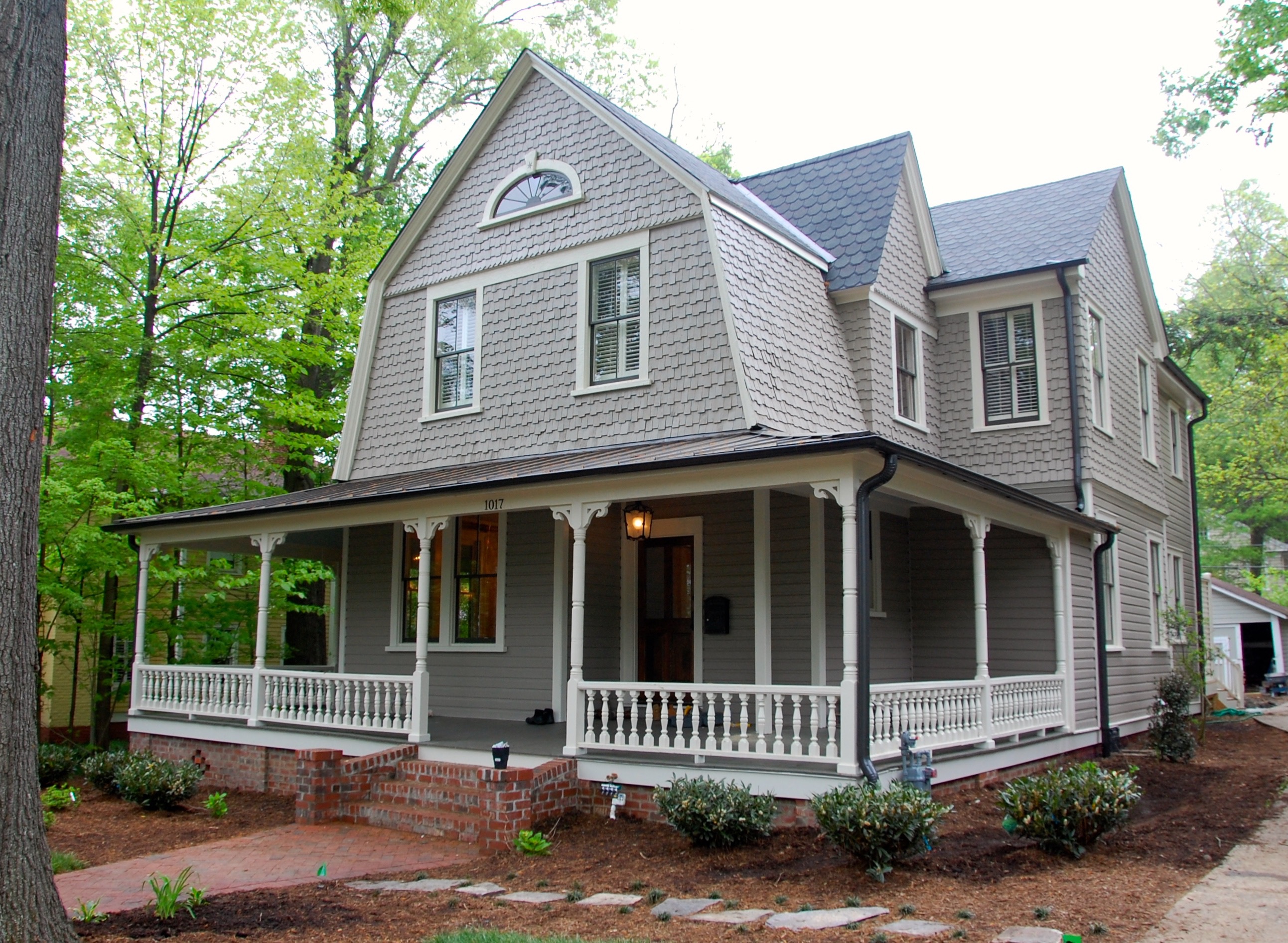4/1’s specialty is preservation – what does this mean?
It does not mean that we should all live in big, drafty houses without modern kitchens, outhouse optional. Instead, it’s respecting the bones and character of an existing house and making sure that whatever happens to it sits well with its history and style. People are drawn to older houses precisely because of the quirks and peculiarities – erasing them during a remodel is precisely not the point.
Preservation also means taking advantage of the tax credits available, following the rules of the local historic district, or researching the story of a house – all pieces that 4/1 can do for you.
Your House

Learn the History of Your House
Each house has a story to tell, about the original owners, a special resident, an era of history, or type of architecture. A House History allows you to learn what has happened in your home since it was built, and is a fascinating snapshot of a single location. 4/1 can track down the stories surrounding your house and present it to you in full, with all the maps, photographs, people, and primary sources that illustrate the narrative.
With this house history, you can receive a bronze plaque from Preservation Durham. Their plaque program has given names and dates to well over 100 properties around the city of Durham, and is a lovely way to call out the historic nature of your house. Any property within Durham that is over 75 years old is eligible.
If you are located within a Local Historic District, any changes (beyond basic maintenance) you make to the exterior of your home must be approved by the Historic Preservation Commission. Drawings and a written description of the project are required, and 4/1 can help explain the process, assemble your application and look it over before the proposal is due to be sure it will pass through easily – and on the first try.
4/1 is happy to act as a preservation consultant on projects in design by another architect or professional, whether it is to meet Local Historic District requirements or to ensure smooth sailing through the Preservation Tax Credit process. Working as part of a larger team is always a pleasure.
Your Neighborhood

Historic Districts
Most houses that are deemed historic are part of a neighborhood that has been declared an historic district – most homeowners are clear on that much. Where it gets confusing is that there are two kinds of historic districts, each with their own rules and benefits, and they can overlap or stand alone. If you have heard that you live in an historic district, the first step is to figure out what kind of district it is – then you can move forward with knowledge of the potential carrots and sticks that may effect you.
Local Historic Districts – Created by a municipality’s planning department, a Local Historic District is a zoning overlay that gives a local commission the ability to regulate changes to the exterior of all the buildings in that district. Often summed up as ‘all stick and no carrot,’ local districts help the homeowners by making sure that all of the neighbors follow agreed-upon guidelines when they alter the exterior of their homes. While some people dislike the idea of being told what they can or can’t do to their house, most of the time the Historic Preservation Commission works very hard to come to a consensus with a homeowner on a given project – and it prevents your neighbors from messing up their houses too much!
The benefits of being in a local historic district boil down to knowing that your property value will not be adversely effected by, say, a nearby house being torn down and replaced with over-sized infill. Similarly, an empty lot in the neighborhood cannot be filled in by an incompatible apartment tower. The preservation commission can also act as an advocate for a neighborhood if a planning issue comes up on the fringes of the district, in ways that are impossible unless local designation is in place.
National Historic Districts – More common than local districts, a national historic district is administered by the National Park Service and the federal government. More carrot than stick, it does offer some protection to a listed neighborhood or house if a federally-funded project would alter the area (often referred to in shorthand as ‘section 106‘) but does not give any rules that must be followed to the average homeowner.
The important carrot associated with the national districts is the preservation tax credit program. These credits are intended to help the owner of an historic property make the right choices when it is time to update or repair the structure, and have helped fund many of the more notable preservation projects in North Carolina.
Financial Benefits

Tax Credits and Local Landmarks
There are two kinds of preservation tax credits available: income- and non-income-producing. If you have a rental house or commercial structure, then it is income-producing; if it is your house, then it does not generate any income for you. For an income-producing building, there is a federal income tax credit equal to 20% of your costs rehabilitating the building and a 15% state income tax credit. For most owner-occupied houses, non-income-producing as they are, it is a 15% state income tax credit only.
A few of the most important rules: original windows must be maintained in place; front porches and facades need to stay as they are (or be returned to an earlier, known historic form); exposed exterior masonry – like foundation walls and chimneys – must not be painted if it is not currently painted. In general, the public areas of the house, especially what you would see from the front door, should not be altered.
There are, of course, exceptions to each of these, and the State Historic Preservation Office treats each application on its own merit. They are quite fair and can often discuss projects after an application is made to find a good solution to some tricky problem… and 15% of your renovation costs is nothing to sneeze at, so once homeowners learn of the program, most chose to apply and do receive the credits in the end. 4/1 often completes preservation tax credit applications, and can answer any questions you may have about the program and the application.
Many people have heard about a rumored way to lower your local property tax bill, and wonder if their house could be a local landmark. Administered by some municipalities, this program helps property owners with significant historic buildings to keep them up for the long term. Each community that has this program in place has slightly different application requirements, and it is recommended that you have a conversation both with a preservation consultant like 4/1 and with your local planning department before you embark on the process.
In general, to be a local landmark your building must be significant historically or architecturally – not just a lovely, well-maintained historic home, but some place connected to a moment in local history or an important person. It is not a quickly-given honorific. Research and a well-crafted argument are crucial to the application process.
Book a Consult
hi.there@fouroverone.com (919) 339-1411
Office Address: 1235 Berkeley St, Durham, NC, 27705
Mailing Address: P.O. Box 355, Durham NC, 27702
